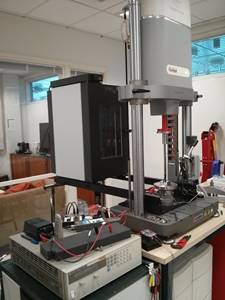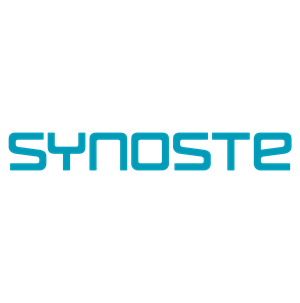

The Overview
As a Finnish start-up company, Synoste is making a name for themselves in the industry through the development of next-generation, patient-friendly medical solutions for the treatment and correction of skeletal deformities. Their first product: a fully implantable device for lower limb lengthening that utilizes smart materials and novel technologies.
The Challenge
As a spin-off from the University of Aalto, the Synoste team was permitted to continue using the university’s traditional servohydraulic testing machine for their R&D. Although the system was located outside of the Synoste lab and was utilized by other departments, limiting its availability, it was a suitable arrangement at the time. Harri Hallila (Synoste founder) and Ryan Livingston (Principal Mechanical Engineer) were familiar with the system, so they were able to generate decent results without additional training.
During the early stages of product development, it became apparent that most issues they experienced were centered around not having the system in-house.
“With Synoste not owning the system we relied on became a huge risk,” said Hallila. “What if something broke during another department’s use? How could we be sure the load cell was always calibrated? We didn’t have the control we needed and these questions were ones that we needed to avoid.”
During R&D, questions were often raised with each new set of test results. And without easy accessibility to the test instrument, it was almost impossible to follow up immediately, leading to a spiraling series of delays. As their research continued, their test requirements grew in terms of both quantity and complexity. It soon became clear to Synoste that to be successful and produce the devices necessary for lower limb lengthening, it was necessary for them to be in front of the machine to accurately react to the results. The only solution was to own their test resources by bringing their testing in-house with their own equipment.
As a start-up company, it was essential to Synoste that the capital investment was a single system that filled their immediate needs, with the added capability to fulfill the requirements of long-term plans.
“It became obvious to our team that we needed to look for a new supplier,” said Hallila. “We realized that the potential of the available systems from our current supplier were lacking in our needs. And from what we saw during the early stages of development, we needed a system, in-house, that was truly flexible and could cater to the range of tests that are required in an R&D environment."
With time as a significant factor, Hallila required a solution that was reliable, easy to use, and well supported in case of questions/issues that normally arise when partnering with a new supplier and when learning a new system.
“This new partnership is crucial to the success of our research and product development,” said Hallila. “It comes down to our need to partner with a company we can trust.”
The Solution
Working within a new facility with clean, quiet, and dedicated lab facilities, Synoste looked immediately at the options for electro-dynamic testing machines. They found that the design of Instron® ElectroPuls™ machines and control systems, together with their training and support packages, would enable their small team to start working effectively and safely in minimal time.
“We didn’t have experience using Instron systems or their software,” said Livingston. “Harri and I found it to be a positive experience that we were able to visit the Instron headquarters in High Wycombe and have hands-on experience with the system and its software, WaveMatrix™. This all happened before purchasing the ElectroPuls E3000 Linear-Torsion instrument and was crucial in our purchasing decision.”
The Results
After the purchase of their new instrument, the Synoste team utilized their local Instron service contact for a few post-installation visits and training sessions.
“Since we started using the system in August, we have stopped outsourcing to contract testing labs,” said Hallila. “Having the full accessibility to our own system allows us to get more data, quickly, which is what we need to get our product to market.”
The biggest surprise of their new system: the benefits of having an instrument that also performed torsion tests.
“We purchased the linear-torsion variant because we knew it would not only be useful immediately, but would allow for a much wider range of tests in the future. If we had not had this capability, our thinking about the product would be different,” said Livingston. “Looking back, it would have been a mistake to have ordered a machine without torsional capabilities.”
With all this new data, Synoste is closer than ever to finishing their R&D phase. Their next step, clinical trials.